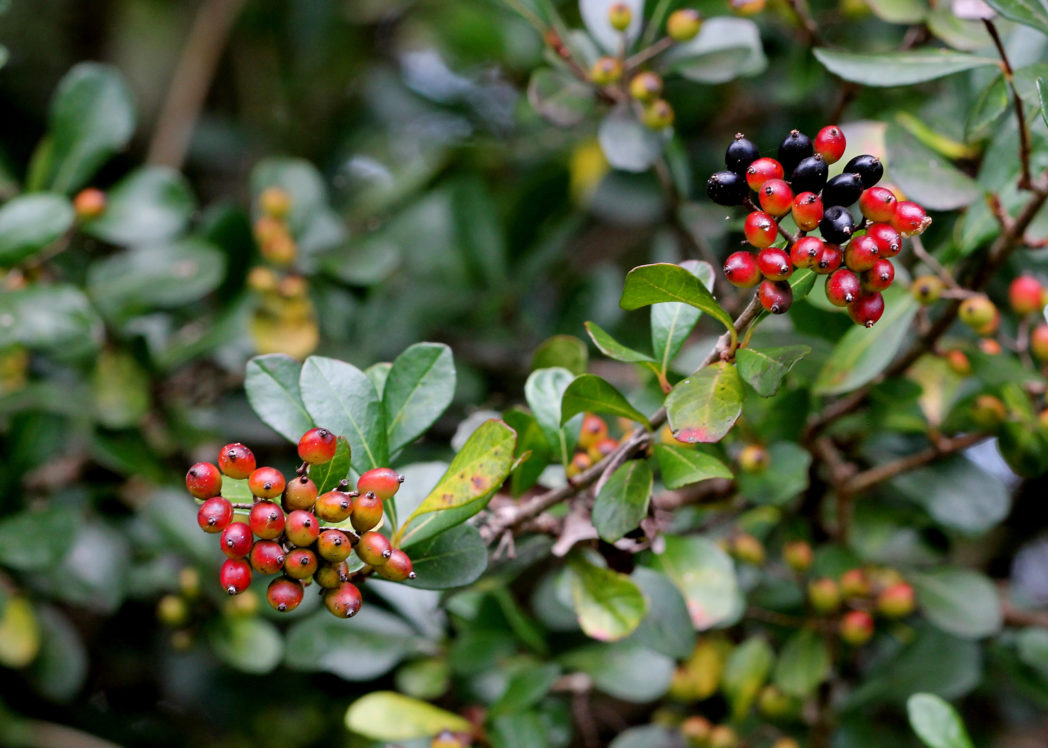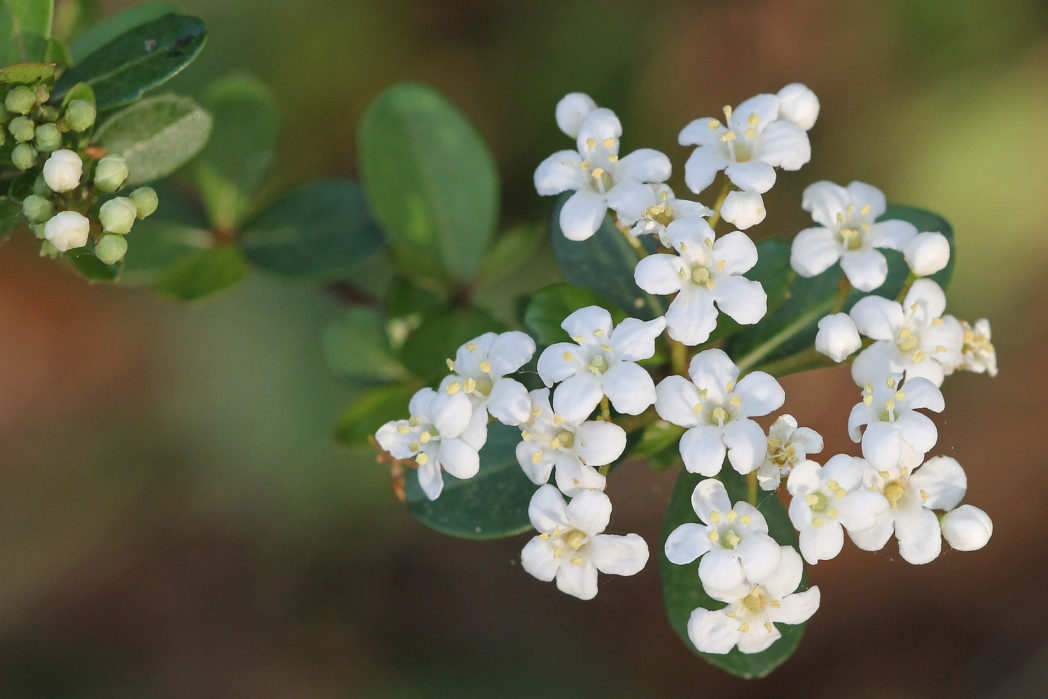Walter’s viburnum
Pictured above: Walter’s viburnum (Viburnum obovatum) by Mary Keim. Click on terms for botanical definitions. View post as a PDF.
Walter’s viburnum (Viburnum obovatum) is an evergreen* woody shrub to small tree that occurs naturally in flatwoods, hydric hammocks, riverine forests, floodplain swamps and bottomland forests. Pollinators are attracted to its showy spring flower clusters, while birds and other wildlife feast on its abundant summer and fall fruit production and use its dense foliage for nesting and cover.
Walter’s viburnum has dainty white flowers born in flat-topped clusters. Its leaves are small (about 1 inch in length), ovate to spatulate, and oppositely arranged. They are dark green and leathery and may have either entire or slightly toothed margins. The fruit is a flat red drupe that turns black when mature.

This species was previously placed in the Caprifoliaceae (Honeysuckle) family.
Family: Adoxaceae (Moschatel family)
Native range: Throughout Florida, except the Keys
To see where natural populations of Walter’s viburnum have been vouchered, visit florida.plantatlas.usf.edu.
Lifespan: Perennial
Soil: Moist to wet, fertile sandy, clay or calcareous soils
Exposure: Full sun to full shade
Growth habit: Variable, up to 12’ and as wide
Propagation: Cuttings, seeds
Florida regions of landscape suitability: North, Central, South
Garden tips: Walter’s viburnum is an excellent choice as an accent plant, both for its form and its early spring flowers. It also makes a great hedgerow, or border/screening plant and can be planted in masses. Plants can send up suckers, but they can be kept in check with timely pruning. It is moderately fast-growing, extremely adaptable to a broad range of conditions, and hurricane wind resistant. It is best propagated by cuttings, as seeds require scarification before planting and may not germinate for several years, although specimens are known to self-seed. *Walter’s viburnum may experience a brief deciduous period in North Florida and/or in colder winter temperatures.
Caution: Most cultivars have been developed outside of the state and do not perform well in Florida landscapes. Some, including Riefler’s dwarf and Mrs. Shiller’s delight (both developed in Florida), widen the usability in home landscapes, but caution is still advised, as the genetic diversity may be compromised with the use of clones.
Walter’s viburnum is often available at nurseries that specialize in Florida native plants. Visit PlantRealFlorida.org to find a native nursery in your area.
Learn more about Walter’s viburnum from the Florida Native Plant Society and the Institute for Regional Conservation.

